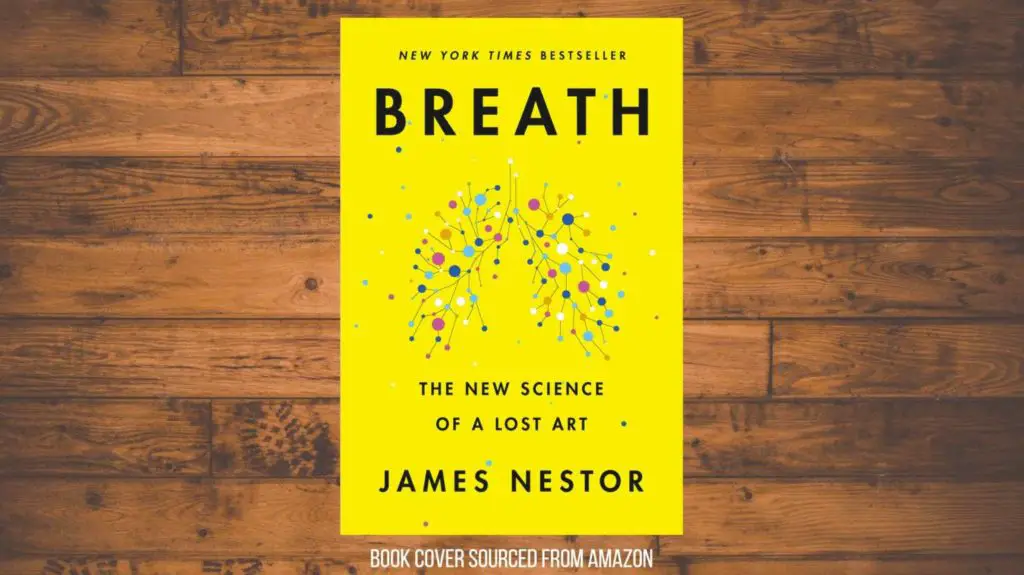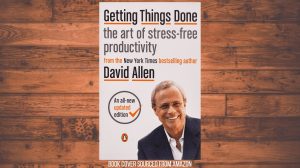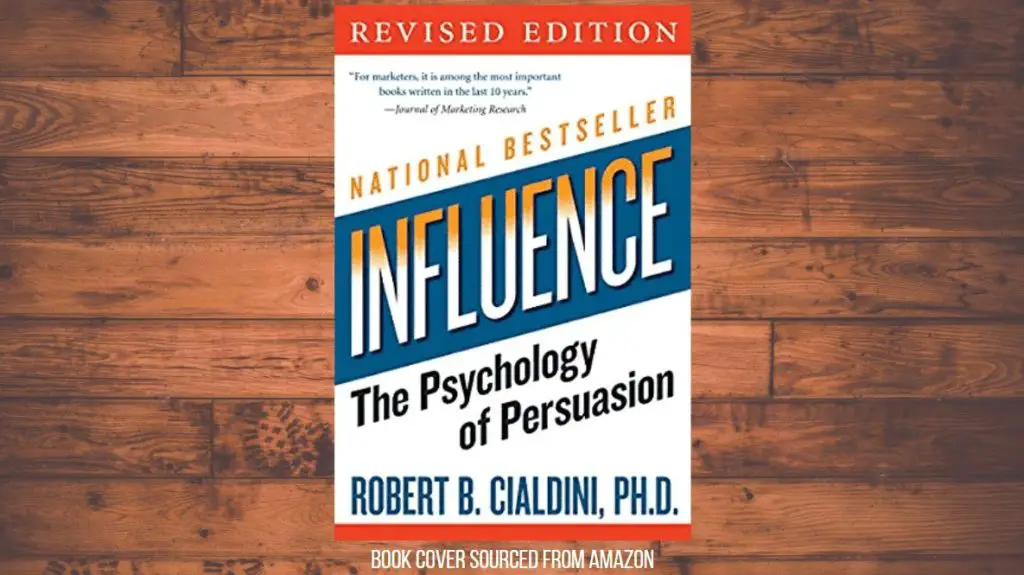This post may contain affiliate links, which means I’ll receive a commission if you purchase through my links, at no extra cost to you. Please read full disclosure for more information.
ABOUT
- Title: Breath
- Sub-title: The New Science of a Lost Art
- Author: James Nestor
- About the author: James Nestor is an author and journalist. He has written for Outside magazine, Men’s Journal, Scientific American, Dwell magazine, National Public Radio, The New York Times, The Atlantic, the San Francisco Chronicle magazine, and more. In addition to his bestseller Breath, he authored the book DEEP, which earned many accolades as well.
- Pages: 304
- Published: 2020
- Link to book
HIGH-LEVEL SUMMARY
This book is all about the lost art of breathing. We take the act of breathing for granted and have probably never taken the time to learn if we are doing it correctly. That’s what author James Nestor sought out to do.
James traveled the world, interviewed others, studied history and evolution, and experimented on himself to learn about the breath. What he shares in his book is astonishing.
Topics covered in Breath include:
- Why mouth breathing is terrible
- How the nasal cavity operates
- How proper breathing can rejuvenate and heal
- How evolution has changed the way we breathe
- The importance of carbon dioxide to your body
- How breathing less and breathing slower are beneficial
- Why you should chew more often
- How you can change the structure of your face, jaw, and nasal cavity to breathe more effectively
- Breathing exercises to relax, wake up, generate warmth, and improve athletic performance
Breathing hasn’t been given the same attention as sleep, diet, and exercise. After reading this book, you’ll realize that breathing is equally as important to your health and well being.
RECOMMENDATION
I highly recommend this book to everyone. If you read it, share it with your friends and family. I believe the impact this book can have is worth sharing.
To become the best version of yourself, you will have to operate on all cylinders. In addition to sleep, diet, and exercise, breathing is just as essential to optimize.
*Breath* will open your eyes to the power of breathing and how you can reclaim that power. The book will share advice that you can immediately implement to initiate positive change in your life. You’ll learn what’s wrong with how we currently breathe, why we are breathing this way, and how we can start breathing properly.
Read this book and The Wim Hof Method and you’ll be well-versed on breathing and breathwork.
If you like this post, you’ll like these ones too:
- Book Review: Think Like a Monk by Jay Shetty
- Book Review: Spark by John J. Ratey, MD
- How to Reduce Stress (15 Ways to do It)
TOP 20 TAKEAWAYS
- In no particular order
1. 90% of us are breathing incorrectly and this failure is either causing or aggravating a laundry list of chronic diseases. 40% of today’s population suffers from chronic nasal obstruction, and around half of us are habitual mouthbreathers.
2. Some of these researchers were also showing that many modern maladies—asthma, anxiety, attention deficit hyperactivity disorder, psoriasis, and more—could either be reduced or reversed simply by changing the way we inhale and exhale.
3. When the nasal cavity gets congested, airflow decreases and bacteria flourish. These bacteria replicate and can lead to infections and colds and more congestion. Congestion begets congestion, which gives us no other option but to habitually breathe from the mouth.
4. Ancient skulls from human ancestors show interesting differences in facial structure and sinus cavities. These skulls all had enormous forward-facing jaws. They had expansive sinus cavities and broad mouths. Even though none of the ancient people ever flossed, or brushed, or saw a dentist, they all had straight teeth.
5. Of the 5,400 different species of mammals on the planet, humans are now the only ones to routinely have misaligned jaws, overbites, underbites, and snaggled teeth. Evolution doesn’t always mean progress. It means change. And life can change for better or worse.
6. Simply training yourself to breathe through your nose could cut total exertion in half and offer huge gains in endurance during fitness activities.
7. Inhaling from the nose has the opposite effect. It forces air against all those flabby tissues at the back of the throat, making the airways wider and breathing easier. After a while, these tissues and muscles get “toned” to stay in this opened and wide position. Nasal breathing begets more nasal breathing.
8. Ever notice how one nostril is clogged and one is open? Well, nostrils open and close like flowers throughout the day and night. This phenomenon is called nasal cycles.
9. Nasal breathing alone can boost nitric oxide sixfold, which is one of the reasons we can absorb about 18 percent more oxygen than by just breathing through the mouth. Immune function, weight, circulation, mood, and sexual function can all be heavily influenced by the amount of nitric oxide in the body.
10. Like other parts of the body, the nasal cavity responds to whatever inputs it receives. When the nose is denied regular use, it will atrophy. If you start taping your mouth shut and forcing your body to breathe through your nose during sleep, your nasal cavity should eventually adjust.
11. For every ten pounds of fat lost in our bodies, eight and a half pounds of it comes out through the lungs; most of it is carbon dioxide mixed with a bit of water vapor. The rest is sweated or urinated out.
12. Inhale and exhale slower. The most efficient breathing rhythm is: 5.5-second inhales followed by 5.5-second exhales, which works out almost exactly to 5.5 breaths a minute.
13. What’s considered medically normal today is anywhere between a dozen and 20 breaths a minute, with an average intake of about half a liter per breath. However, aim for 5.5 breaths a minute.
14. The changes triggered by the rapid industrialization of farmed foods were severely damaging to humans. Within just a few generations of eating this stuff, modern humans became the worst breathers in Homo history, the worst breathers in the animal kingdom…
15. Continued: The human face began rapidly deteriorating. Mouths shrank and facial bones grew stunted. Dental disease became rampant, and the incidence of crooked teeth and jaws increased tenfold in the Industrial Age.
16. Unlike other bones in the body, the bone that makes up the center of the face, called the maxilla, is made of a membrane bone that’s highly plastic. We can grow bone at any age. All we need are stem cells. The more we gnaw, the more stem cells release, the more bone density and growth we’ll trigger, the younger we’ll look and the better we’ll breathe.
17. Breathing is a power switch to the autonomic nervous system. The first, called the parasympathetic nervous system, stimulates relaxation and restoration. The second half of the autonomic nervous system, the sympathetic, has an opposite role. It sends stimulating signals to our organs, telling them to get ready for action.
18. Hormetic stress: The body becomes more adaptable and flexible and learns that all these physiological responses can come under our control. Conscious heavy breathing, which puts acute stress on our bodies, allows us to bend so that we don’t get broken. Examples are Tummo and the Wim Hof method.
19. For panic attacks, the common advice of “take a deep breath” is actually not the best thing to do. Holding your breath during a panic attack is better.
20. While some of us may be genetically predisposed toward one disease or another, that doesn’t mean we’re predestined to get these conditions. Genes can be turned off just as they can be turned on. What switches them are inputs in the environment.
WHAT I LIKED

Author experimented on himself and shared his experiences
Throughout the book, author James Nestor experiments on himself in the world of breath. As a journalist, he goes to the source and conducts research himself. James goes 10 days strictly mouthbreathing and 10 days strictly nose breathing. He travels around the world, studying the past and present, and takes part in breathwork exercises.
His sharing of these experiences is helpful and insightful. He was skeptical about many things he had heard or read, but eventually witnessed them firsthand. This helped reduce my own skepticism on the claims and stories in the book.
Explained how human evolution has caused issues
The evolutionary aspect of how we breathe was unexpected but made total sense. The book discusses how our ancestors lived and how that affected their facial structure and bone development. Over time, this changed as humans began to eat softer food and grow bigger brains.
Prior to the book, I never would have guessed these evolutionary changes could have caused respiratory problems. This part of the book is eye-opening.
Gave prescriptive changes you can implement immediately
Breathing is simple enough, though most of us aren’t doing it correctly. With a little knowledge and practice, we can start breathing correctly and using the breath as a tool for our health and well-being.
The book offers this help by educating the reader on what’s correct and incorrect. Following that, James Nestor advises on ways you can improve your breathing.
For the most part, these changes can be implemented immediately without the need for spending money or using external help. Some benefits come quickly and other long-term benefits are achieved by consistently breathing properly.
BENEFITS TO YOUR LIFE AND CAREER

Finally breathe correctly
Breathing is something you do from birth until death. Most of us were never taught how to breathe correctly. This book will teach you how to breathe properly and this alone can have a huge impact on your life and career.
Improve sleep and recovery
Improper breathing can lead to snoring, sleep apnea, dehydration, and overall more exertion on your body. By breathing correctly, your sleep will improve because of the efficiency you’ll gain.
Sleeping with less disruption will benefit you in all areas of your life. This is a third of your life we are talking about. You can’t afford to compromise your sleep quality.
Improve athletic endurance
Breath will teach you how you can improve your athletic endurance by changing the way you breathe and implementing certain practices.
By simply breathing through your nose, you can improve your endurance by lowering exertion on your body and absorbing more oxygen. Another example of how you can improve is by practicing the Buteyko technique, which involves breathing less to train the body to breathe in line with its metabolic needs.
I’ve personally prioritized breathing strictly through my nose, while controlling my breathing pace, and noticed an improvement to my endurance while running a mile.
Manage stress more effectively
Implementing what you learn in Breath will help you manage stress more effectively in several ways.
First, you’ll be able to keep yourself calm through breathwork and meditation. If you suffer from anxiety and panic attacks, you can use your breath (and carbon dioxide) to bring yourself back to a normal state.
Other breathing practices will purposely put acute stress on your body. This is called “hormetic stress.” Hormetic stress on the body can make you more resilient to actual stress in life.
Finally, proper breathing can help lower your heart rate, lower your blood pressure, and overall decrease cardiovascular stress.
10 ACTIONS YOU SHOULD TAKE
1. Breathe through your nose as much as you can. If you are a chronic mouthbreather, focus on breathing through your nose. It will be hard, but over time, will become easier.
2. Try to chew more often. It can involve tougher foods, gum, or chewing devices. This will help with bone development.
3. Even while you exercise, breathe through your nose. You’ll experience less exhaustion and your body will absorb oxygen more efficiently. The result is an improvement in endurance.
4. Breathing through your nose while you sleep is just as important. If you mouthbreathe in your sleep, literally tape your mouth shut. Use 3M Nexcare Durapore “durable cloth” tape, an all-purpose surgical tape with a gentle adhesive.
5. Focus on breathing more from your diaphragm. This will ease cardiovascular stress and allow the body to work more efficiently.
6. Breathe slower. When breathing at a normal rate, our lungs will absorb only about a quarter of the available oxygen in the air. The majority of that oxygen is exhaled back out. By taking longer breaths, we allow our lungs to soak up more in fewer breaths.
7. Take 5.5 breaths per minute by inhaling 5.5 seconds and exhaling 5.5 seconds
8. Breathe less. This is not the same as breathing slower. Humans have an overbreathing problem now, which purges carbon dioxide.
9. Incorporate breathwork practices into your daily life. There is Tummo, the Wim Hof Method, Holotropic breathing, etc. Breathing techniques are best suited to serve as preventative maintenance.
10. If you are having a panic attack, try holding your breath instead of taking deep breaths.
RESOURCES
Breath can be found on Amazon at **this link here** if you are interested in reading.



